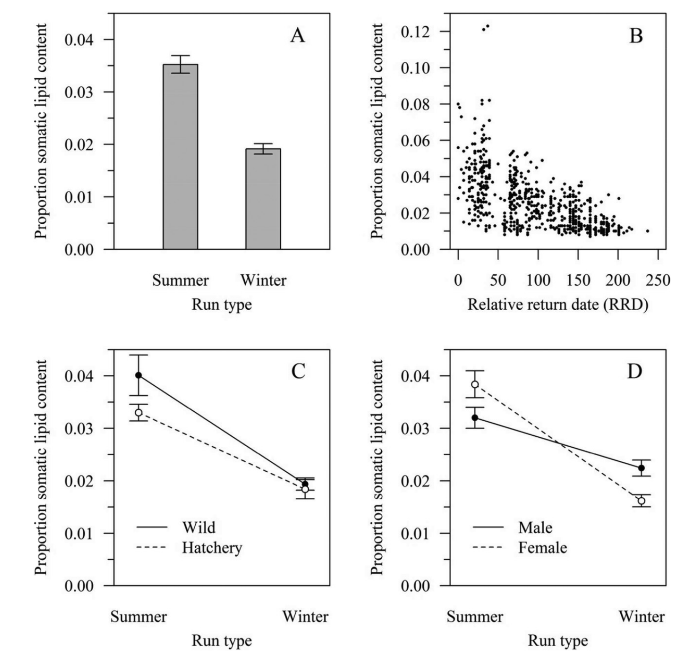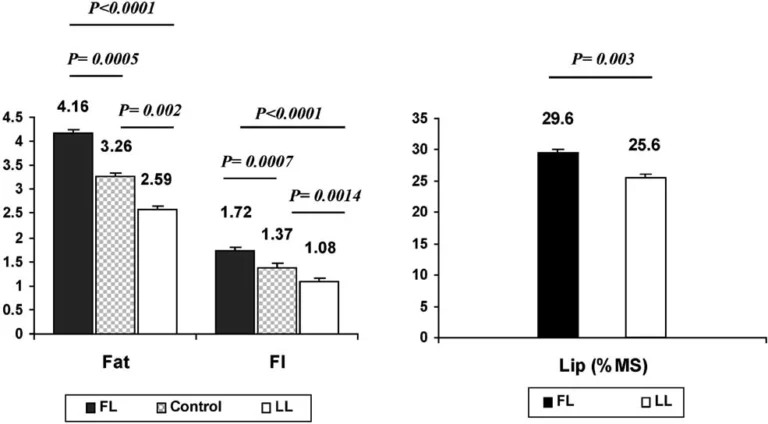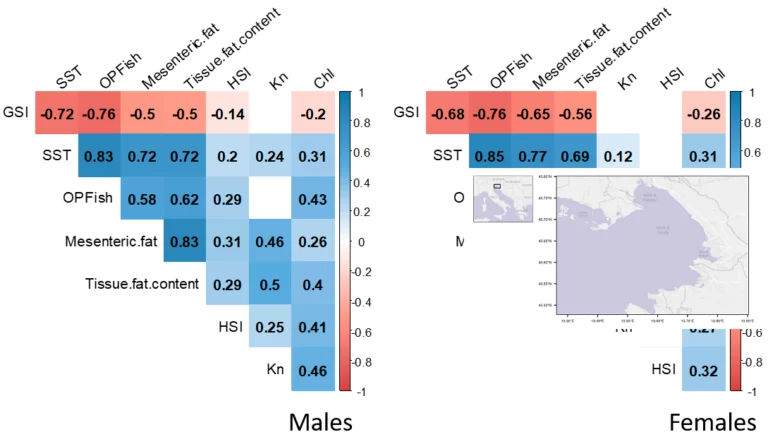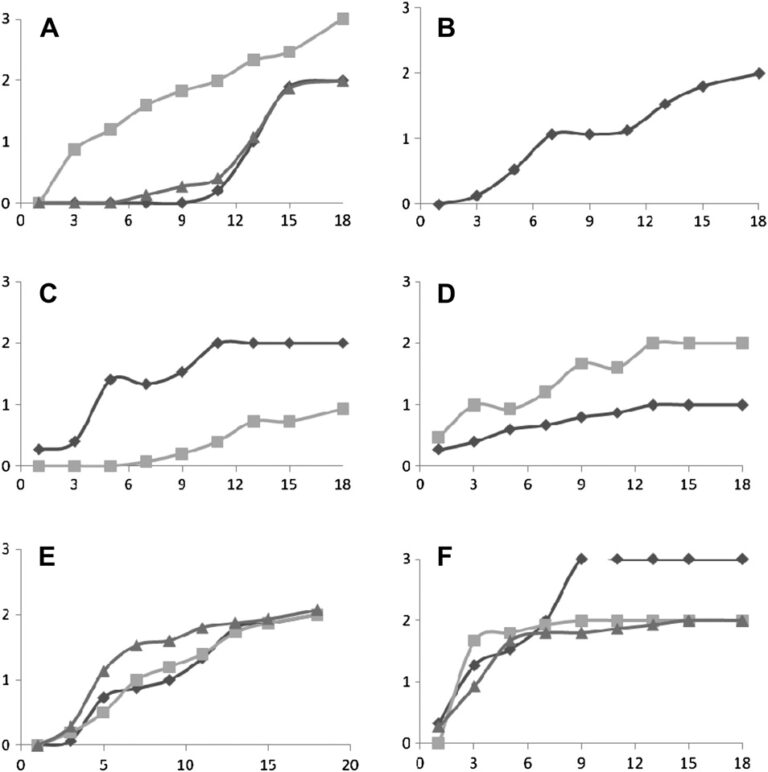Levels of stored energy but not Marine foraging patterns differentiate seasonal ecotypes of wild and hatchery Steelhead returning to the Kalama River, Washington
| Title | Levels of stored energy but not Marine foraging patterns differentiate seasonal ecotypes of wild and hatchery Steelhead returning to the Kalama River, Washington |
| Written by | James S. Lamperth, Thomas P. Quinn, Mara S. Zimmerman |
| From | Washington Department of Fish and Wildlife, USA University of Washington, USA |
| Published | June 10, 2016 |
| Fish Species | Steelhead (Oncorhynchus mykiss) |
What the research is about
This article discusses the differentiation of seasonal ecotypes of steelhead trout returning to the Kalama River in Washington. The Fish Fat Meter was used to help understand the differentiation, making it an important topic for industry professionals, researchers, and tech enthusiasts who value precision, expertise, and innovation in fisheries research.
Study was to compare energy storage, as indicated by somatic lipids (SL), and marine foraging, as indicated by stable isotopes of N and C, between seasonal runs of steelhead of wild and hatchery origin. We did so by sampling steelhead returning to the Kalama River in southwestern Washington, including summer and winter fish of hatchery and wild origins.
The Fish Fat Meter is an instrumental tool for measuring the lipid content of the dorsal muscle tissue in fish. In this article, the Fish Fat Meter was used to estimate the proportion of lipid in the dorsal muscle tissue, which served as an index to contribute to understanding the energetic condition of the fish. The Fish Fat Meter solved the problem of identifying the differentiation of seasonal ecotypes of steelhead trout returning to the Kalama River, as it helped to understand the level of stored energy in wild and hatchery steelhead. This identification is important for informed fish management decisions.
The Fish Fat Meter provides a non-destructive method for measuring lipid content in the dorsal muscle tissue of fish. It accurately measures the fish’s stored energy, which helps inform management decisions, the estimation of migration timing and spawning, and the effect of ocean growth on fish populations. It offers an alternative approach to traditional, destructive chemical methods that can also be time-consuming and costly.
The Fish Fat Meter can be used in the management of fisheries, monitoring of fish stocks, and understanding the energy status of fish populations. For example, fisheries managers can use it to monitor salmon populations and ensure sustainable management practices. Researchers can also use it to explore the relationship between ocean growth and the stored energy level of fish, helping to develop a more comprehensive understanding of fish biology and ecology.
The Fish Fat Meter provides an important tool for understanding the energetic condition of fish populations, making it useful for informed fishery management decisions. In the article, the Fish Fat Meter has contributed to the conclusion that levels of stored energy, but not marine foraging patterns, are responsible for differentiating seasonal ecotypes of steelhead trout returning to the Kalama River in Washington. This conclusion has important implications for the management of steelhead populations and the development of sustainable fishing practices. Therefore, the use of the Fish Fat Meter provides valuable insights that can contribute to the advancement of fisheries management and research.
Research conclusion
The study found that the Fish Fat Meter device played a significant role in measuring and analyzing the lipid content in the dorsal muscle tissue of steelhead fish. By utilizing the Fish Fat Meter, the researchers were able to differentiate between wild and hatchery steelhead ecotypes based on their levels of stored energy. It was observed that lipids are primarily used for migration and egg production, while proteins are mainly utilized for secondary sexual characteristics and spawning metabolism.
The results revealed complex processes controlling the storage of energy needed for migration, reproduction, and postspawning survival in steelhead and, by extension, other anadromous fishes. After controlling for the distance the fish migrated, the two seasonal runs differed markedly in stored energy upon arrival; earlier-arriving fish had more energy than those arriving later, and wild fish tended to have more energy than hatchery fish.
The key benefits of using the Fish Fat Meter device highlighted in this article include its ability to accurately estimate lipid content in fish tissue. The Fish Fat Meter, which measures the proportion of lipid in the dorsal muscle tissue, proved to be a reliable index of energetic status. The device’s measurement relied on the inverse relationship between water and lipids, a relationship well-supported by numerous studies. It allowed for the identification of changes in energetic condition as steelhead fish enter fresh water, and it provided insight into the impact of population-specific or interannual environmental variations on the growth of steelhead in the ocean.
The Fish Fat Meter demonstrated its effectiveness and utility in this study by aiding in the measurement of lipid content in the dorsa muscle tissue of steelhead fish. This device contributed to the differentiation of wild and hatchery steelhead ecotypes based on their levels of stored energy, providing important information for researchers and fishery managers.
Assurant Innovations take
Fish Fat Meter was used to measure total lipid (fat) in the fish which is a key indicator of stored energy.
This research article sheds light on the distinction between wild and hatchery steelhead ecotypes based on their stored energy levels and marine foraging patterns. In this sales pitch, we will explore how the Fish Fat Meter contributed positively to this study and outline the benefits it offers to potential buyers in the scientific community.
This study used the Fish Fat Meter to measure the proportion of lipids in the dorsal muscle tissue of steelhead. By accurately quantifying the lipid content, this device provided vital information on the energetic condition of the fish. Understanding the levels of stored energy is essential for evaluating migration behavior, egg production, secondary sexual characteristics, and metabolism during spawning, leading to a comprehensive understanding of steelhead populations. The Fish Fat Meter’s precise measurements ensure the reliability and accuracy of data, enhancing the quality of research outcomes.
Benefits of the Fish Fat Meter:
- Accurate and Efficient Measurements: The Fish Fat Meter employs advanced technology to provide accurate and repeatable measurements of lipid content in fish without invasive techniques. Researchers can save time and resources while obtaining valuable insights into fish physiology.
- Improved Comparisons: The Fish Fat Meter’s standardized measurements facilitate direct comparisons among different studies. Researchers can confidently compare results from various methodologies, enhancing the cross-disciplinary understanding of fish energy storage and growth patterns.
- Customizable Calibrations: The Fish Fat Meter allows for quick and easy calibration, ensuring measurement accuracy in different experimental conditions. Each steelhead in the study was sampled using eight readings, minimizing errors and supporting robust data collection.
Potential buyers may have objections or skepticism, but the Fish Fat Meter has strong responses to address these concerns:
- Methodological Differences: Some researchers may question the compatibility of the Fish Fat Meter’s results with other studies due to variations in methodologies. It is important to emphasize that the Fish Fat Meter provides accurate measurements within an accuracy range of ±0.5%. This range accounts for acceptable variations and ensures reliable data comparison while maintaining high levels of precision.
- Population-Specific Variation: Skeptics might argue that population-specific or interannual environmental variations could impact the Fish Fat Meter’s effectiveness. However, the study found that the device’s measurements were consistent and reliable across different steelhead groups. Researchers can use the Fish Fat Meter to assess energetic conditions irrespective of population-specific variation.
The Fish Fat Meter has showcased its value in this research article. By providing accurate and efficient measurements of lipid content, the Fish Fat Meter significantly contributed to the study’s findings. Researchers and fishery professionals interested in gaining precise insights into fish energy storage, migration, and reproductive patterns will greatly benefit from incorporating the Fish Fat Meter in their scientific endeavors. Invest in the Assurant Innovations Fish Fat Meter to unlock new frontiers in fish physiology and foster advancements in research and technology.
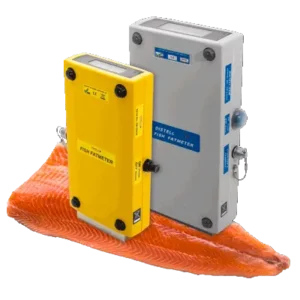
Fish Fat Meter
To Purchase: Call or Email


